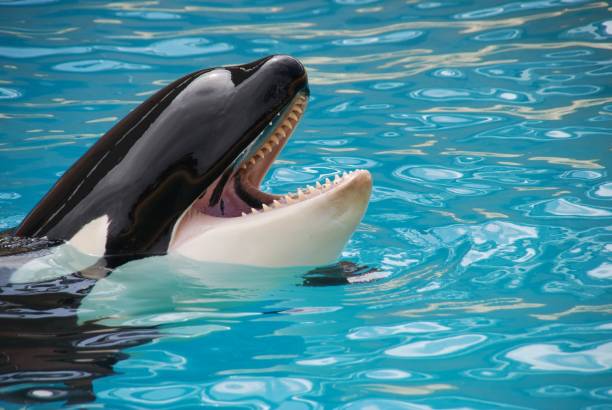The Legacy of Lolita the Orca: A Landmark Case for Animal Rights
In the heart of Miami, the Miami Seaquarium held a remarkable figure for five decades – Lolita the Orca. Her captivating presence drew crowds and sparked conversations about animal captivity, ethical concerns, and the delicate balance between entertainment and conservation. This article delves into the life of Lolita, the legal battles that surrounded her captivity, and the broader implications for animal rights.
Introduction: The Enigmatic Life of Lolita
Lolita’s journey began in the Pacific Northwest when she was captured in 1970 and brought to the Miami Seaquarium. For over 50 years, she mesmerized audiences with her intelligence and grace, becoming a symbol of both wonder and controversy.

The Legal Battle: Lolita’s Fight for Freedom
Lolita’s captivity did not go unnoticed by animal rights activists and organizations. Concerns were raised about the conditions of her confinement, prompting a legal battle that continues to this day. The advocacy group People for the Ethical Treatment of Animals (PETA) spearheaded efforts to secure her release into a sea pen, where she could experience a more natural environment.
Endangered Species Act
became a pivotal point in this legal saga. Under this legislation, Lolita’s status as a Southern Resident killer whale, a protected species, granted her certain rights. PETA argued that confining her in a small tank with limited social interactions and space violated these rights.
Ethical Controversies: Entertainment vs. Conservation
The case of Lolita stirred debates about the ethical implications of keeping marine mammals in captivity for entertainment purposes. The “Blackfish” documentary further intensified these discussions, shedding light on the psychological and physical toll of captivity on these majestic creatures. Critics questioned the morality of profiting from animals’ suffering, highlighting the need for improved regulations and standards in the marine entertainment industry.
A Call for Change: Shaping Future Policies
Lolita’s legacy extends beyond her captivating performances. Her case served as a catalyst for change within the realm of animal rights and captivity practices. Advocates pushed for stricter regulations, larger enclosures, and more enrichment activities for captive marine animals.
Proposed Changes in Animal Entertainment
1. **Increased Enclosure Size**: Experts and activists call for larger enclosures that replicate natural habitats, allowing animals like Lolita to engage in more natural behaviors.
2. **Educational Focus**: Transitioning marine parks from entertainment-centric to education-focused platforms could foster a deeper understanding of marine life and conservation efforts.
3. **Phasing Out of Captive Breeding**: To address the moral dilemma, ceasing captive breeding of marine animals for entertainment could prevent the perpetuation of captivity-related issues.
The Mermaid Syntax Diagram: Lolita’s Impact
“`mermaid
graph LR
A[Lolita’s Arrival in Miami Seaquarium]
B[Legal Battle and the Endangered Species Act]
C[Ethical Controversies: Entertainment vs. Conservation]
D[A Call for Change: Shaping Future Policies]
E[Increased Enclosure Size]
F[Educational Focus]
G[Phasing Out of Captive Breeding]
A –> B
B –> D
C –> D
D –> E
D –> F
D –> G
A Lasting Mark on Animal Rights
Lolita’s story resonates far beyond the confines of the Miami Seaquarium. Her life ignited discussions on the ethical treatment of animals in captivity and the urgent need for reformation in the marine entertainment industry. As we reflect on her legacy, it becomes evident that the conversation she sparked is instrumental in shaping a more compassionate and just future for marine life.










